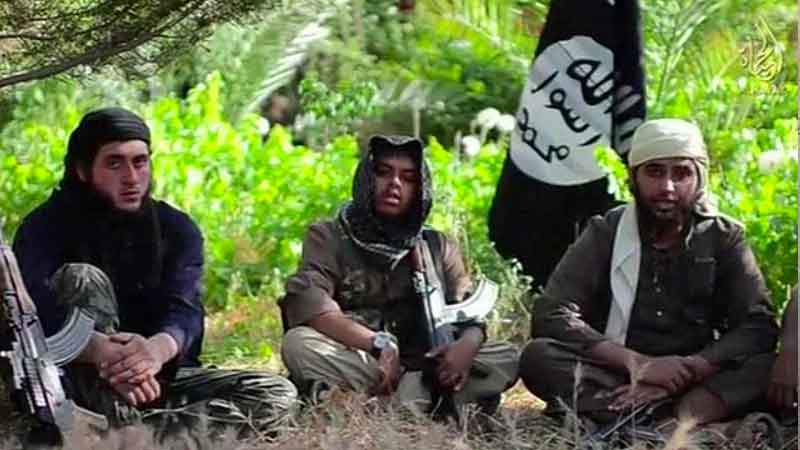
James Welch Ph.D. (c) Leiden University
The foreign fighter phenomenon (FFP),[1] has been the center of attention for many national security and intelligence agencies.
It has been a prime area of focus for police and homeland security and global corporations as well.
Much ink has also flowed in the academic realm, yet few conclusive results, or suggestions on how to deal with the situation have been forthcoming.
This article is presented as an initial contribution to an expanding debate and will hopefully stimulate certain insights and provide possible avenues for further exploration and research.
The term “foreign fighter,” in today’s parlance, and in this specific context, relates largely to second or third generation, radicalized Muslim (often youth) individuals, who leave their Western host state in order to engage in conflicts abroad (usually in the Middle East or Central Asia).
While this has largely supported a pro-terrorist agenda there has also been a similar yet much smaller counterterrorist movement, supporting groups such as the Christian sponsored, Dwekh Nawsha,[2] or the peshmerga Kurds as well.[3]
(Learn More. A former US soldier traveled to northern Iraq where he joined the Assyrian Christian militia Dyvekh Nawsha which means “self-sacrifice” in Aramaic. It’s a privately funded group numbering in the hundreds under the command of the Kurdish peshmerga that is fighting ISIS in northern Iraq and eastern Syria. Courtesy of PBS Newshour and YouTube. Posted on Mar 20, 2015.)
This leads to a geopolitical conundrum: we have individuals assisting those defending themselves against the Islamic state and its franchises, who are in turn being attacked by Turkey, a NATO ally, which is ostensibly (at least theoretically) engaged in fighting against the Islamist threat as well.
If ever there was a situation defining “the fog of war,” the conflict in Syria certainly qualifies as a classic textbook definition.
The larger and far more significant proportion of foreign fighters, however, support the terrorist organizations and their operations.
Among those who escaped arrest and prosecution upon their return, many remain demoralized and disillusioned after witnessing the secular infighting and bloody internecine nature of the conflict.
Their initial enthusiasm has often been tempered the by strenuous, and challenging environment they faced.
Their false illusions of glory have been blunted by the harsh and cruel reality on the ground.
Daniel Byman reports, that only approximately ten-percent are involved in violence upon their return.
Despite this fact, the cumulative overall numbers (an estimated 40,000) remain a cause for alarm and call for a greater awareness of the threat.[4]
(Learn More. We take stock how many have returned and what the Liberals are doing about it. Courtesy of Maclean’s and YouTube. Posted on Jan 25, 2018.)
Thomas Hegghammer, as cited by Byman, also asserts that when foreign fighters are involved in terrorist plots their chances of success and their lethality are both enhanced significantly.[5]
The threat is against both the public, industry and the nation’s infrastructure.
We must also consider the secondary effects, other than direct violence which threaten stability.
Among these returning fighters, many maintain a low profile in order to avoid detection and arouse suspicion among Western security services.
After an incubation period, the urge to contribute to the jihadist struggle returns and certain turn to an indirect contribution; that of proselytizing.
Through the use of direct contacts, peer-relations and social media returning fighters also assist in the promotion of propaganda and the radicalization process.
Such proselytizing and hate-mongering creates a conundrum for societies that advocate the individual right to free speech.
Given their battlefield credentials, former foreign fighters represent an attractive “role model” for gullible future candidates.

The Bottom Line
There exist a host of possible approaches to the problem of foreign fighters.
The choices range on a scale stretching from deterrence to punishment.
Of course, the most obvious and immediate strategy is that of counter radicalization.
Nipping it in the bud before it ever rears its head is certainly a positive threat reduction strategy.
In order to be successful such a strategy requires long-term investment and organization.
It also requires collaboration from the Muslim community. Due to the cohesive nature of the Muslim community (ummah) such collaboration remains questionable.
A solid counter radicalization process requires a narrative which emphasizes the advantages of avoiding radicalization, rather than a mere outright condemnation of the process.
The ‘chilling out” process used against radical extremists during the 1960s and 70s of integrating these elements into the national security process, could also be a possible alternative.

In comparison, given the insidious nature of religious commitment, the screening and surveillance of any such agents needs to be maintained and enhanced should they actually be employed operationally.
These are some of the defensive counter radicalization processes that can assist in reducing the threat.
In the middle path strategy, we can turn to intelligence and security maintenance as sources of “smart power.”[6]
Intelligence plays an important role in the counter radicalization process.
When not arrested and imprisoned, known foreign fighters should be the subject of targeted surveillance and monitored by intelligence services.
All too often complacency and a failure to properly follow up leads, ends in missed opportunities.
Additionally, failed or poor intelligence procedures can and have resulted in and catastrophic consequences.[7]
Prisons are breeding grounds of radicalization and this is an area requiring intensive focus.
(Learn More. In episode 14 of The Third Jihad, Clarion Project takes a look at one fertile hotbed for radicalization; American prisons. With little direction or hope, radical Islamist elements pray on prisoners offering them stability, hope, direction and ideology. Radical Islamists try a program of brainwashing these prisoners into undertaking acts of terror. Courtesy of Clarion Project and YouTube. Posted on Jul 19, 2017)
On the offensive end of the spectrum, there is the possibility of arrest, exclusion, and expulsion.
Under the pressure of political correctness, and in the name of cultural diversity and moral relativism many are afraid to speak the truth regarding today’s realties.
This has been one of the greatest threats posed to a free and open society.
While many have attacked the Trump policy of threat reduction by establishing security restrictions on immigration, there is a sound and clear logic involved in that process.
If the threat cannot gain access in the first place it cannot propagate and carry out its destructive mission.
Returning foreign fighters who have been granted asylum and turn to violence against their host nation should be stripped of their citizenship, lose their rights and be returned to their point of origin.
Such firm action will also send a clear message and reduce any future impetus to participate.
END NOTES
[1] Whenever possible I try to avoid using acronyms. This is a specific term, however, I have developed for the purpose of ease of identification.
[2] Sheva, A. (2015, February 18). Meet the ‘Foreign Legion’ of the Anti-ISIS Christian Militia. Retrieved from www.isrealnationnews.com: http://www.israelnationalnews.com/News/News.aspx/191492
[3] Specia, M. (2018, January 27). Foreign Fighters Back Kurdish Militia in Syria in Fight Against Turkey. Retrieved from www.nytimes.com: https://www.nytimes.com/2018/01/27/world/middleeast/foreign-fighters-kurdish-militia-syria.html
[4] Byman, D. (2015). Al Qaeda, and The Islamic State, and The Global Jihadist Movement: What everyone needs to know. New York: Oxford University Press: p. 106.
[5] Ibid., p. 105.
[6] Joseph S. Nye, Jr., and David A Welch. Understanding Global Conflict and Cooperation. 8th. Boston: Longman, 2011. Nye developed this term back in 2003 to counter the misconceived perception that conflict resolution could be carried out exclusively using soft power instruments, such as diplomacy. In this regard, he follows and elaborates upon the line of thought originally developed by Samuel Huntington.
[7] Burton, F. (2005, July 20). London Bombings: OPSEC Errors or Intelligence Failure? Retrieved from https://worldview.stratfor.com: https://worldview.stratfor.com/article/london-bombings-opsec-errors-or-intelligence-failure.
About the Author
















